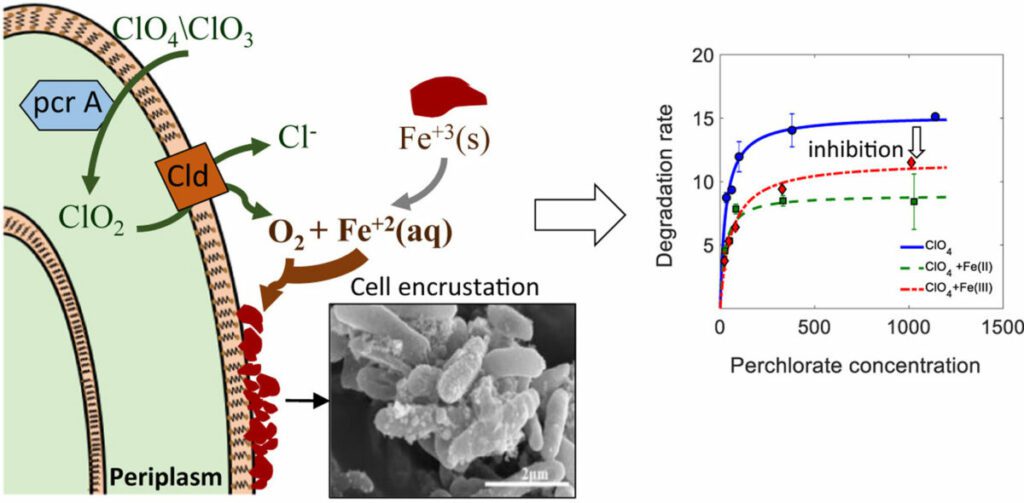Highlights
- Perchlorate degradation efficiency was evaluated under unique geochemical conditions.
- Ferrous and ferric iron were found to inhibit perchlorate degradation non-competitively.
- Transient chlorate accumulation indicates a disruption of the involved enzyme.
- The presence of ferrous iron during perchlorate degradation leads to cell encrustation.
Abstract
Previous observations from in-situ biological treatments in the subsurface of a perchlorate-contaminated site revealed multiple reduction processes occurring parallel to perchlorate degradation. Iron reduction was accelerated and correlated with a decline in the efficiency of the in-situ perchlorate reduction. In the current study, we examined the influence of iron forms on perchlorate reduction. A series of kinetic laboratory experiments were conducted, using an indigenous mixed perchlorate-reducing culture, enriched from the polluted soil that was undergoing bioremediation. The results show that ferrous iron was a non-competitive inhibitor with a 41% decrease in µmax for perchlorate reduction. Moreover, chlorate was accumulated in all samples treated with ferrous iron, indicating a disruption to the chlorate reduction step. Ferric iron, however, had less impact on perchlorate degradation with non-competitive inhibition reaching a 23% decrease in µmax. Scanning electron microscopy (SEM) revealed that the presence of ferrous iron in the perchlorate degradation enrichment culture initiated cell encrustation. We propose that during perchlorate reduction and the emission of oxygen from chlorite dismutation, the chemical oxidation of ferrous iron occurred near the bacteria’s surface where the enzyme is located, forming an oxidized iron crust layer that can directly affect the perchlorate reduction enzymatic system.
Graphical Abstract
